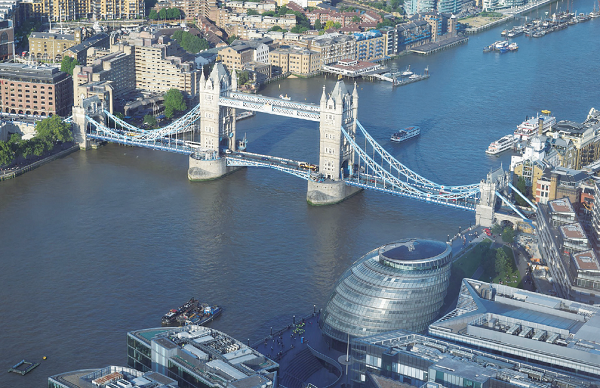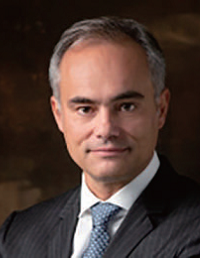Global Water Issue Ⅱ. 물재이용 확대 : 왜 하·폐수 재이용이 합리적일 수 있는가
전 세계적으로 물부족이 심화되는 가운데 하·폐수 재이용수는 역사에 비해 이용이 보편화되지 않은 중요한 잠재 수자원이다. 과거에는 직접적으로 재이용하는 양이 매우 적었으나, 최근에는 다른 대체수자원보다 투자비용이 저렴하고 에너지 사용 또한 절감할 수 있다는 장점 때문에 산업용수와 농업용수 등 다양한 용도로 처리해 활용하는 사례가 늘고 있다. [번역·정리 = 동지영 차장]
“하·폐수 재이용 통해 물재이용 확대 필요”
지속가능한 담수 공급원 추가 제공해 도시지역 기후변화 대응에 기여 가능
IFC, 민·관합작투자사업 형태로 신흥시장 하·폐수처리장 건설 가속화 목표
물재이용 확대 : 왜 하·폐수 재이용이 합리적일 수 있는가
Scaling up water reuse: Why recycling our wastewater makes sense
지난 8월 23일자 세계은행 블로그에 국제금융공사(IFC) 니코 사포리티(Nico Saporiti) 선임 투자책임자와 엘리너 로빈스(Elleanor Robins) 도시·환경인프라 부문 투자책임자가 기고한 ‘물재이용 확대 : 왜 하·폐수 재이용이 합리적일 수 있는가(Scaling up water reuse: Why recycling our wastewater makes sense)’의 내용을 소개한다.
남아프리카공화국에서 세 번째로 큰 도시 더반(Durban)에서는 제지공장과 지역 정유소에서 2001년부터 매일 올림픽 규격 수영장 13개에 해당하는 하·폐수를 처리해 산업용수로 재이용하고 있다.
이는 더반시와 민간 환경서비스 기업 간 민·관 협력(PPP) 덕분에 가능했다. 그리고 하·폐수 재이용이 일부 도시의 극심한 물부족 문제를 해결하는 데 어떻게 도움이 되는지 보여주는 좋은 사례다.
하·폐수 재이용은 불편함이나 혐오감을 불러일으킬 수 있다. 사람들은 화장실에서 사용된 물을 재사용한다고 하면 대체로 거부 반응을 보인다. 하지만 실제로는 꽤 흔한 일이다. 하·폐수 재이용은 수천 년의 역사를 갖고 있다.
영국 런던은 식수의 상당 부분을 주요 수원인 템스 강(River Thames)을 통해 간접적으로 재활용하고 있으며, 나미비아 빈트후크(Windhoek)는 1965년부터 하수의 직접음용(Direct-Potable Reuse) 계획을 시행해오고 있다.
인도, 싱가포르, 멕시코, 스페인 등에서도 물재이용을 통해 주요 산업에 수원을 제공, 한정된 수자원에 대한 수요를 충족시키고 있다. 예를 들어 발전소, 정유공장, 그리고 자동차 산업을 포함한 기타 공장에서 재이용된 물을 사용할 수 있다.
In Durban, South Africa’s third largest city, an amount of wastewater equivalent to 13 Olympic-sized swimming pools has been treated and reused for industrial use by a paper mill and a local refinery every day since 2001.
A public-private partnership(PPP) between the city and a private environmental services company made this achievement possible. And it is a good example of how wastewater reuse is helping some cities address critical water shortages.
Wastewater reuse - recycling and reusing water from our sewerage systems - may prompt what is quite simply known as the “yuck” factor. People are naturally squeamish about the idea of reusing water that comes from our toilets, even though it’s actually quite common. Wastewater reuse has been around for thousands of years.
In London, a significant portion of the drinking water is indirectly recycled through the River Thames, the main water source for the British capital. This is also being done in Windhoek, Namibia, where a direct potable reuse scheme has been operating since 1965.
In other places, such as India, Singapore, Mexico and Spain, reused water can provide a valuable water source for key industries, reducing the demand on limited water resources. Power plants, refineries, mills, and factories, including, for instance, those in the auto industry, can use reused water.

필요성은 크다. 전 세계적으로 약 42억 명이 안전하게 관리되는 위생시설을 사용하지 못하고 있을 뿐만 아니라 세계 하·폐수의 80%가 적절하게 처리되지 않고 있다. 또 세계 인구의 36%가 물부족 지역에서 살아가고 있으며, 급속한 도시화로 인해 물수요는 오는 2050년까지 지금보다 최대 55% 증가할 것으로 예상된다.
동시에, 기후변화는 담수의 가용성에 점점 더 큰 예측불가능성과 변동성을 만들어내고 있다. 유엔은 오는 2050년이면 전 세계 인구 18억 명이 완전한 물부족(absolute water scarcity) 국가나 지역에 살게 될 것으로 내다봤다. 또 사하라 사막 이남 아프리카 모든 지역에서 물부족을 경험하게 될 것으로 전망했다.
‘코로나19’ 대유행으로 사람들은 믿을 수 있는 물공급에 대한 접근 부족 정도와 결과를 보다 잘 인식하게 됐고, 이는 물 유틸리티가 수도시설에 필요한 투자를 하도록 만들었다. 분쟁이나 사회적 취약성의 영향을 받는 국가는 물 문제와 물 서비스 악화에 특히 취약하다.
세계은행에 따르면, 이 모든 것이 중요한 이유는 물공급 및 위생에 대한 접근의 격차가 경제 발전, 빈곤 퇴치 및 지속가능 개발에 가장 큰 위험요인 중 하나기 때문이다. 국제금융공사(IFC) 분석에 따르면 신흥시장의 도시가 ‘코로나19’ 이후 회복의 일환으로 저탄소 물과 폐기물에 집중한다면, 2030년까지 최대 2조 달러(한화 약 2천400조 원)의 투자를 촉진하고 2천300만 개 이상의 새로운 일자리를 창출할 것이다.
The need is great. Not only do some 4.2 billion people around the world lack access to safely managed sanitation services, but 80 percent of global wastewater is not adequately treated. As much as 36 percent of the global population lives in water-scarce areas, and water demand is expected to rise to 55 percent by 2050 amid rapid urbanization.
At the same time, climate change is creating greater unpredictability and variability in the availability of fresh water. The United Nations estimates that 1.8 billion people will be living in countries or regions with absolute water scarcity by 2050, with Sub Saharan Africa counting the largest number of water-stressed countries of any region.
The COVID-19 pandemic has heightened awareness of both the extent and consequences of the lack of access to a reliable water supply, and has had an impact on the ability of water utilities to make necessary capital investments. Countries affected by conflict and social fragility are especially vulnerable to water challenges and a deterioration of water services.
All of this matters because, as the World Bank says, gaps in access to water supply and sanitation are among the greatest risks to economic progress, poverty eradication and sustainable development.
Municipal waste and water is also an investment opportunity. An IFC analysis found that if cities in emerging markets focused on low-carbon water and waste as part of their post-COVID recovery, they would catalyze as much as $2 trillion in investments, and create over 23 million new jobs by 2030.
| “IFC 분석에 따르면, 신흥도시가 ‘코로나19’ 이후 회복의 일환으로 물과 폐기물의 저탄소형 처리 및 재이용에 집중한다면, 2030년까지 최대 2조 달러의 투자를 촉진하고 2천300만 개 이상의 일자리를 창출할 것이다.” |
처리된 하·폐수를 재이용하는 순환경제 접근 방식은 수백만 명의 사람들에게 잠재적인 이점이 있다. 이는 산업용수와 농업용수, 그리고 간간이 음용수 이용을 위한 신뢰할 만한 수원을 제공할 수 있으며, 담수화 또는 유역 간 물 이동과 같은 대체수자원보다 투자비용이 저렴하고 에너지 사용 또한 절감할 수 있다는 장점이 있다.
IFC에 따르면 하·폐수 처리를 통한 재이용수 생산 비용은 입방미터(㎥)당 미화 0.32달러, 광역상수도는 0.45달러, 담수화의 경우 0.50달러 이상으로 추정된다.
하·폐수 재이용과 더불어 하·폐수 처리 또한 중요하고 직접적인 기후 이점(혜택)이 있다. 많은 경우 하·폐수 처리는 온실가스 배출, 특히 메탄(CH4)을 줄이는 데 도움이 된다. 잘 설계된 하·폐수 프로젝트는 메탄 포집 및 에너지 생성과 같은 더 나은 슬러지 관리 솔루션을 가능하게 해, 공장 운영 시 발생하는 온실가스 배출을 완화하는 데 도움이 된다.
더욱이 물재이용은 지속가능한 담수 공급원을 추가로 제공함으로써 도시가 기후변화에 대응하도록 도와준다.
The circular economy approach of reusing treated wastewater has potential benefits for millions of people. It can provide a reliable water source for industrial, agricultural and - occasionally - potable uses, often at lower investment costs and with lower energy use than alternative sources, such as desalination or inter-basin water transfers.
IFC estimates that the cost of producing non-potable recycled water can be as low as $0.32 per cubic meter, and potable water $0.45, compared with more than $0.50 for desalination.
Treatment of wastewater coupled with effluent reuse also has important direct climate benefits. In many cases, treating sewage water helps reduce greenhouse gas emissions, particularly methane. A well-designed wastewater project allows for better sludge management solutions, such as methane capture and energy generation, which help mitigate the greenhouse gas emissions coming from plants’ operations.
Moreover, water reuse can contribute to helping cities adapt to climate change by providing an additional and sustainable source of fresh water.

세계 대부분의 담수화 프로젝트는 민간에서 개발되고 자금이 조달된다. 그러나 신흥시장에 속하는 국가 및 지방 정부가 물 및 위생 관련 수요를 충족시키고 예산을 충당하는 데 중대한 어려움을 느끼고 있어, 하·폐수 처리 및 재이용 부문에서 잘 구성된 민·관합작투자사업(PPPs)이 실행가능한 방법으로 점차 주목받고 있다.
물재이용 프로젝트에는 특정 도전과제가 따른다. 우선 물은 지역적 문제이기 때문에 같은 프로젝트란 있을 수 없다. 물은 또한, 일반적으로 분산된 수준에서 관리되지만, 높은 위험과 자본비용에 대한 인식도 우려를 불러일으킬 수 있다.
IFC는 물재이용 분야를 지원할 좋은 기회를 기대하고 있다. 새로운 이니셔티브 ‘세계은행 그룹 스케일링 리워터(World Bank Group Scaling ReWater)’를 통해 IFC는 경제성 문제를 고려하면서 하·폐수 처리 및 재이용 분야 투자에 대한 진입장벽을 허무는 데 도움을 주고자 한다.
‘세계은행 그룹 스케일링 리워터(World Bank Group Scaling ReWater)’ 이니셔티브는 거래 자문, 경쟁력 있는 금융 솔루션, 보다 간단한 입찰 절차, 그리고 공공·민간의 하이브리드 파이낸싱(hybrid financing)을 지원하기 위해 설계된, 총체적 접근을 제공하는 하나의 툴킷(toolkit)이다. 우리의 전반적 목표는 민간 자본을 활용해 신흥시장에서 하·폐수처리장 건설을 가속화하는 것이다. 세계은행 그룹은 이를 위해 파트너와 협력할 수 있는 기회를 환영한다.
The majority of desalination projects globally are privately developed and financed. Yet, as national and local governments in emerging markets continue to face significant gaps in meeting water and sanitation needs and budgetary constraints, well-structured PPPs in wastewater treatment and reuse are increasingly seen as a viable option.
Water reuse projects do come with particular challenges. For one thing, water is a local matter and no one project is like another. Water is also typically managed at a decentralized level, where local utilities may lack resources and capacity, while perceptions of high risk and cost of capital can also raise concerns.
IFC sees an enormous opportunity to assist in this area. Through our new World Bank Group Scaling ReWater initiative, IFC is helping address barriers to investment in wastewater treatment and reuse, while also taking into account affordability concerns.
Scaling ReWater is a toolkit offering transaction advice, competitive financing solutions, a more straightforward tendering process and a holistic approach designed to mobilize hybrid financing from public and private sources. Our overall objective is to leverage private capital to accelerate the construction of wastewater treatment plants in emerging markets. The World Bank Group welcomes the opportunity to work with our partners to achieve this.
■ 필자 소개

IFC 선임 투자책임자
니코 사포리티(Nico Saporiti)는 지난 25년간 영국, 라틴아메리카, 남아프리카 등지에서 기술 컨설턴트, 투자자 등으로 활약하며 물 분야에서 다양한 전문 경험을 쌓았다. 세계은행 라틴아메리카 도시팀에서도 근무했다. 또 IFC에서 15년 동안 수석 거래 고문 및 물 부문 스페셜리스트로 활동했다. 그는 스위스 국제경영대학원(IMD)에서 MBA를 취득했으며 금융전문교육기관인 SFI(Swiss Finance Institute)에서 금융 공학 자격증을 취득했다. 이탈리아 폴리테크노 공과대학(Politecnico di Milano University)에서 토목공학과(물)을 전공했다.

IFC 도시·환경인프라 부문 투자책임자
엘리너 로빈스(Elleanor Robins)는 뉴욕과 파리 은행에서 일했으며 소규모 풀뿌리 신용 협동조합을 지원하기 위해 서부 및 북부 아프리카에서 근무한 경험이 있다. 프랑스 파리정치대학(Sciences Po)에서 국제경제정책 석사 학위를 취득했다.
| [출처 = 세계은행 블로그(https://blogs.worldbank.org/climatechange/scaling-water-reuse-why-recycling-our-wastewater-makes-sense) / 2021년 8월 23일] |
[『워터저널』 2021년 10월호에 게재]

